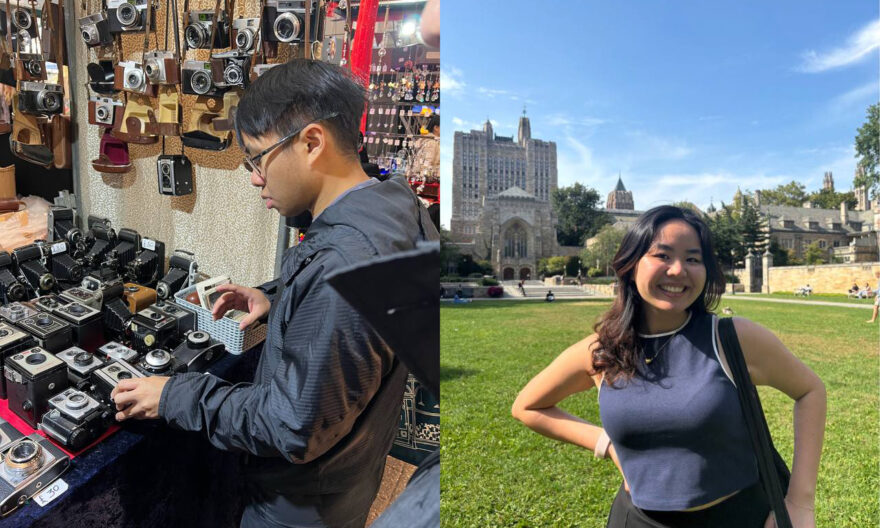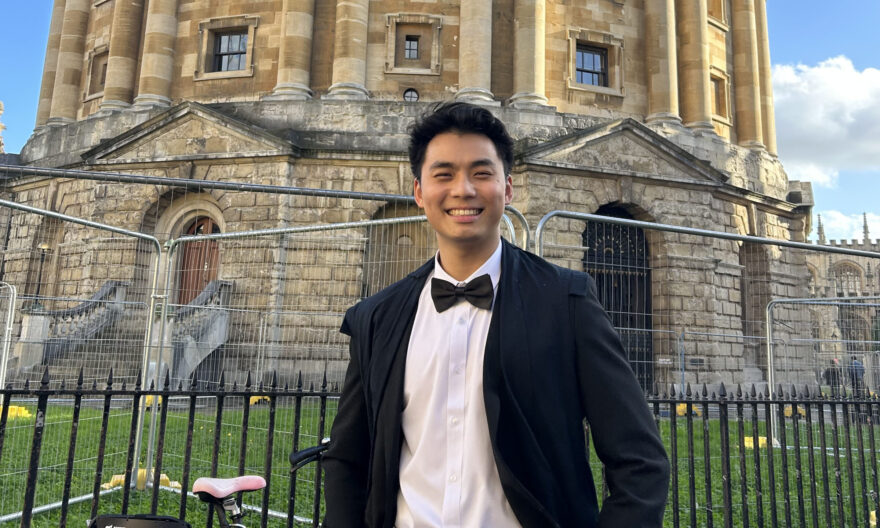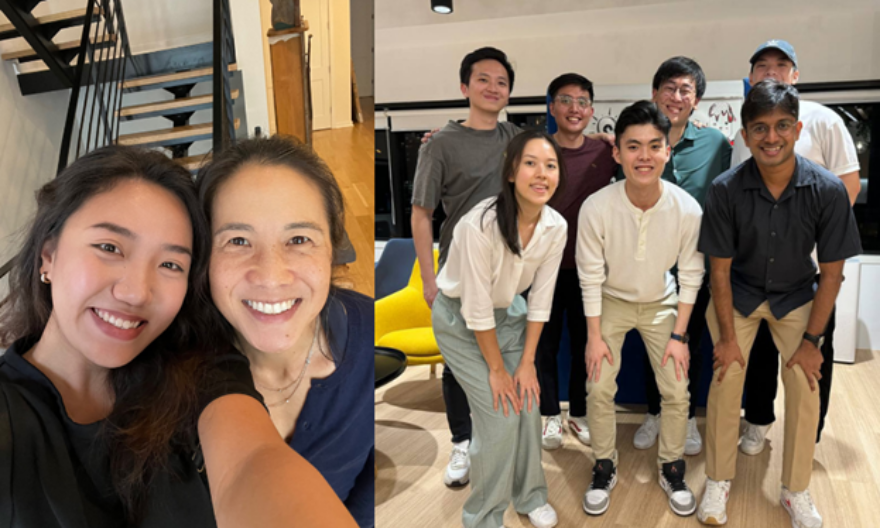Learning Across Boundaries: Personal engagement with traditional Japanese arts
Yale-NUS students engage with traditional Japanese arts through faculty-led experiential learning trip to Kyoto, Japan
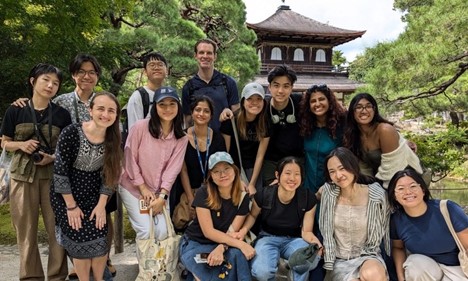 Yale-NUS students in front of Ginkakuji, the silver pavilion in Kyoto, Japan. Image provided by Zhana Sandeva.
Yale-NUS students in front of Ginkakuji, the silver pavilion in Kyoto, Japan. Image provided by Zhana Sandeva.
Yale-NUS College held its final Learning Across Boundaries (LAB), a faculty-led experiential learning project of short duration, during the recess week. Yale-NUS Senior Lecturer of Humanities (Theatre Studies) and Theatre Programme Coordinator Jonathan Vandenberg brought the students to Kyoto, Japan to engage with traditional Japanese arts.
During this trip, students participated in traditional cultural activities and visited a variety of culturally significant locations. We have compiled five highlights from the LAB.
- Noh
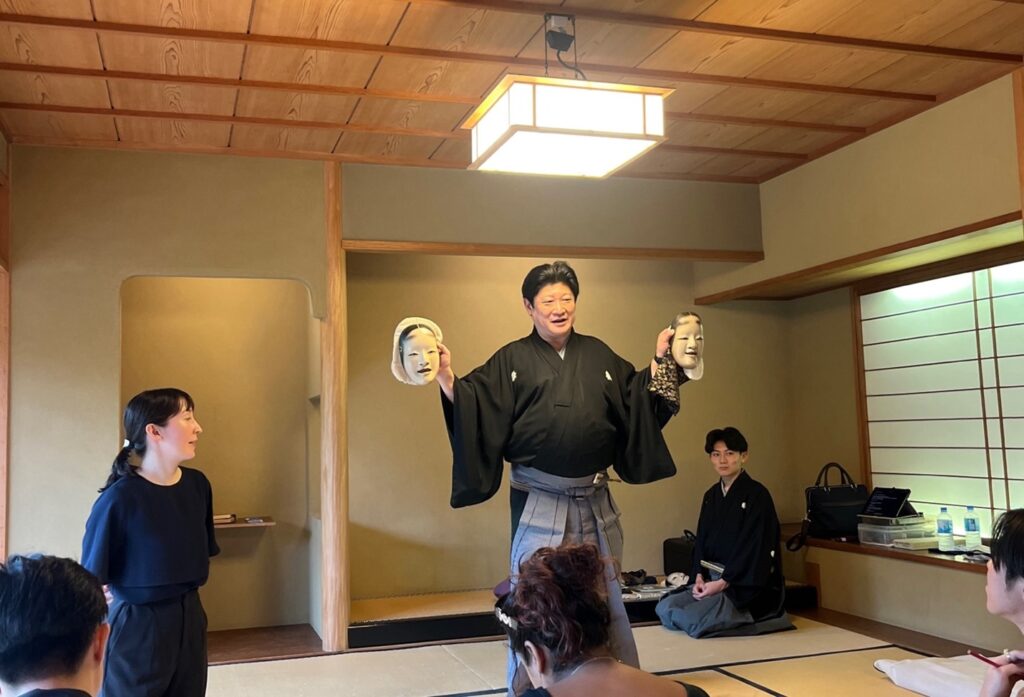 The Noh workshop, where the tenth-generation actor holds up two masks used in Noh. Image provided by Jamie Wong Jen Min.
The Noh workshop, where the tenth-generation actor holds up two masks used in Noh. Image provided by Jamie Wong Jen Min.
One of the traditional art forms that the students learned about was Noh. Noh is the oldest surviving form of Japanese theatre and is particularly known for the masks used during performance. It is unique as plays performed today are identical to those in the past, be it in words, music, composition, and acting. Besides watching a Noh play, the students also participated in a Noh workshop, where they learned from a tenth-generation actor.
“It was such a unique experience to get to learn more about the details of this performance art, especially one that differs greatly from the performance arts I have been exposed to,” said Rachel Cheong (Class of 2025).
“This included learning about the different masks the performers use to show different expressions and characters. For example, a specific mask is worn by supernatural characters to signal their identity to the audience. We also learned how to walk in a Noh performance, which is much harder than it looks!” She added, “It made me realise the amount of details and practice that goes into what might look seemingly easy, and I greatly admire those who dedicate their lives to continue this art.”
- Kabuki
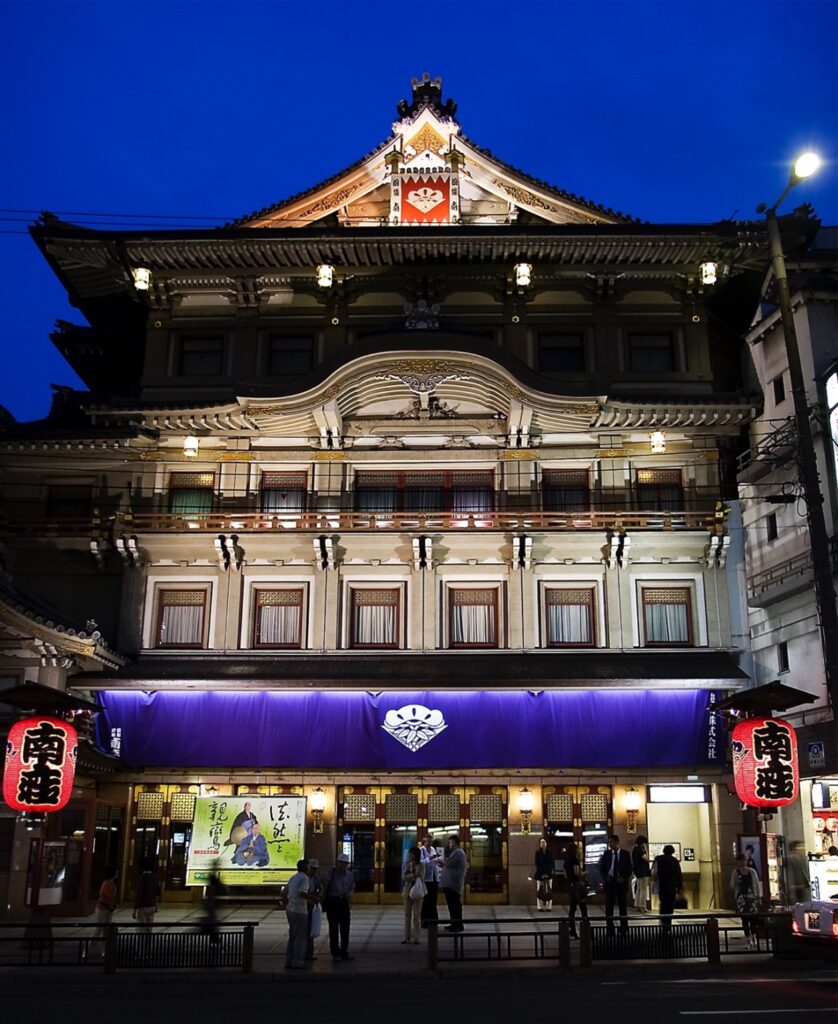 Minamiza theatre, the Kabuki Theatre, in Kyoto, Japan. Photo Credit: MichaelMaggs, CC BY-SA 2.5, via Wikimedia Commons.
Minamiza theatre, the Kabuki Theatre, in Kyoto, Japan. Photo Credit: MichaelMaggs, CC BY-SA 2.5, via Wikimedia Commons.
One of the most popular activities among the students who went on the LAB was the Kabuki play. Like Noh, Kabuki is a traditional Japanese performance art that uses exaggerated movements and stylised props. Students watched a Kabuki play adaptation of a children’s story book, Arashi no Yoru ni. This translates to One Stormy Night and tells the story of an unlikely friendship between a goat and a wolf, who met by chance during a stormy night. The play follows their struggles to remain friends despite the antagonism that exists between their species, and against their instincts. Several of the students found this modern Kabuki play an enriching experience, despite it being entirely in Japanese and lacking subtitles.
“I enjoyed the Kabuki play because it helped me discover the power of theatre, bodily expressions and dramatic performance in conveying stories,” shared Bairu Dong (Class of 2025). “It’s a new type of storytelling that isn’t as realistic as Western plays, but their performance—their body language and costumes—are so over the top that I somehow found it engaging and managed to roughly follow the plot throughout, even though I don’t speak, read, or write Japanese at all. There’s something about watching a performance that can break or even transcend the language barrier.”
Vasudha Kataruka (Class of 2019), reflected about the Kabuki with relation to history. She said, “While the stringent conservation of Noh allowed for a more “authentic” historical experience, Arashi no Yoru ni actively contextualised a traditional theatre practice in the present-day. Both ways of preservation are valid, but the modern Kabuki was more immersive and thus made me feel more invested. It made me think that historical traditions don’t need to be static to preserve that their historical relevance, it showed a different way of engaging with traditional arts.”
- Ryoanji Rock Garden
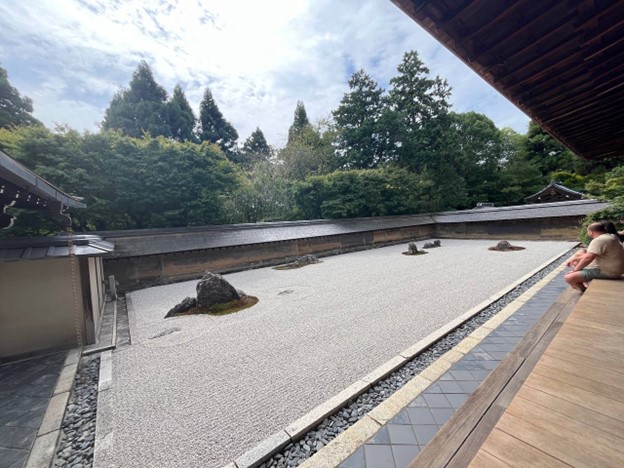 Ryoanji rock garden. Image provided by Dong Bairu.
Ryoanji rock garden. Image provided by Dong Bairu.
Besides learning about performance art, the students also visited a number of sites like temples and gardens. One location that students enjoyed was Ryoanji, which houses one of the most well-known rock gardens in Japan.
Zhixin Sheng (Class of 2025) said, “Visiting the garden was particularly memorable because of its meditative quality. I like that we spent a lot of time just contemplating the rock garden in front of us. It was a rare chance for me to be still and concentrate on the moment, closely observing what’s in front of me.”
- Arashiyama Bamboo Forest
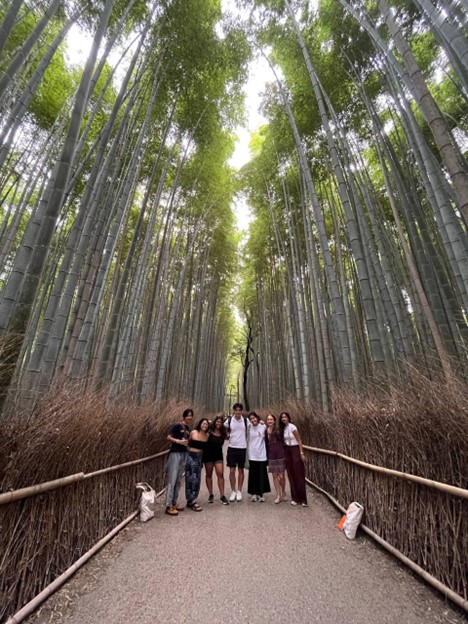 A group of LAB attendees at the Arashiyama bamboo forest. Image provided by Zahra Lalani.
A group of LAB attendees at the Arashiyama bamboo forest. Image provided by Zahra Lalani.
The Arashiyama Bamboo Forest was appreciated for a similar reason. As its name implies, this is a natural bamboo forest in Kyoto, which is intercut with several pathways for visitors to manoeuvre around. The students were given free time to explore the area, as it has a number of other attractions such as the Rakushisha Residence, a thatched hut that 17th century poet, Mukai Kyorai lived in.
Zahra Lalani (Class of 2025) said, “We saw thatched huts in a rural area, and learned about what traditional life in the past looked like. It was really cool seeing what belongings people thought of as necessities,” she recalled.
“Plus, the forest felt so freeing after spending many days visiting temples and walking around the city. I got to really think about how amazing the properties of bamboo are, from a science perspective, as it can be used for recreation, construction, and medicine.”
- Calligraphy
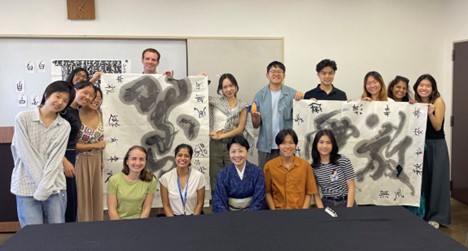 The students holding calligraphy by the calligraphy expert, Seiko Shirai (the lady in a blue kimono). Image provided by Zhana Sandeva.
The students holding calligraphy by the calligraphy expert, Seiko Shirai (the lady in a blue kimono). Image provided by Zhana Sandeva.
Another key highlight of the LAB was the opportunity to learn calligraphy directly from a calligraphy expert, Seiko Shirai.
Kazuto Nakano (Class of 2025) reflected, “I liked how the writing itself manifested the cultural encounter between countries, because the letters that we wrote originated from China. Also, the act of writing is a very physical one, where one needs to be aware of the self. When the ink permeates through the paper, it resembles how mountains are shaped by surrounding waters. The calligraphy felt like a tiny universe.”
Through engaging with traditional Japanese arts in Kyoto, students were encouraged to reflect on their embodied experience of the arts, and think about questions such as how traditional arts helped them understand history, how it has been brought and preserved in the present, and how they themselves related to it.

